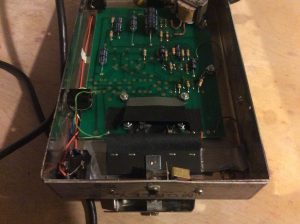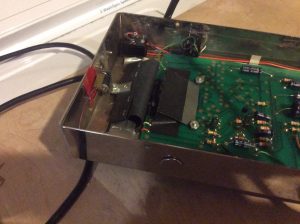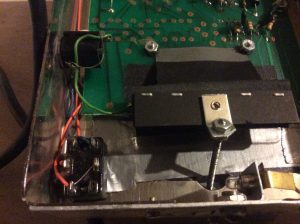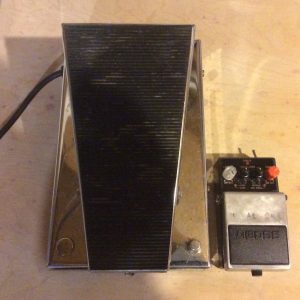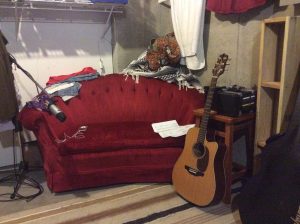Cole gave me some cool vintage pedals to fix the other week, and I learned a lot working on this old Morley WVO Wah-Volume. As he gave it to me the wah effect worked, but the volume control didn’t.
Both effects are controlled by photoresistors. In the image above, you can see them peeking out from under the black hood that’s taped to the green PCB. These are variable resistors that serve the same function as potentiometers (or “knobs”).
Sidenote; you can see how the Morley company used one PCB, enclosure, and drilling template for several different models of pedal to save on production costs. Notice the empty pads where additional components could go on the PCB, and the metal buttons filling unused holes in the enclosure like the one below.
Both the wah and volume circuits are based on light from the little bulb on the left side of the photo above hitting those photoresistors (or not). (The bulb is on the other side of the bracket near the red electrical tape.)
The heel of the treadle is connected to that flap of black fabric. In the heel-down position, the fabric covers the opening of the hood (just heavy black paper and black masking tape); the photoresistors are in near-total darkness and therefore near their maximum resistance. This is shown in the photo below.
As the player pushes the treadle forward toward the toe-down position, the fabric flap is pulled back, gradually allowing light from the bulb to reach the photoresistors and decrease their resistance. The photo above shows the toe-down position.
So Cole’s pedal was, electrically, perfectly fine. The fabric flap had come un-taped from the inside of the enclosure (40-year-old masking tape will do that), so light was reaching the volume circuit’s photoresistor no matter the position of the treadle. Re-taping the flap to the enclosure solved the issue.
I literally fixed a pedal with duct tape.
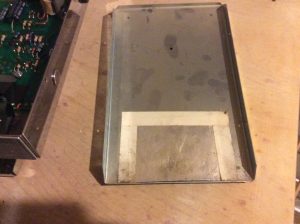
The bottom plate of the enclosure even has some reflective paper taped to it, to reflect the bulb’s light and strengthen the effect (see above).
These old chrome Morleys are built like tanks, sound great, and have an extremely high cool factor. They’re also heavy, and giant; see below, next to a standard Boss pedal for scale.

